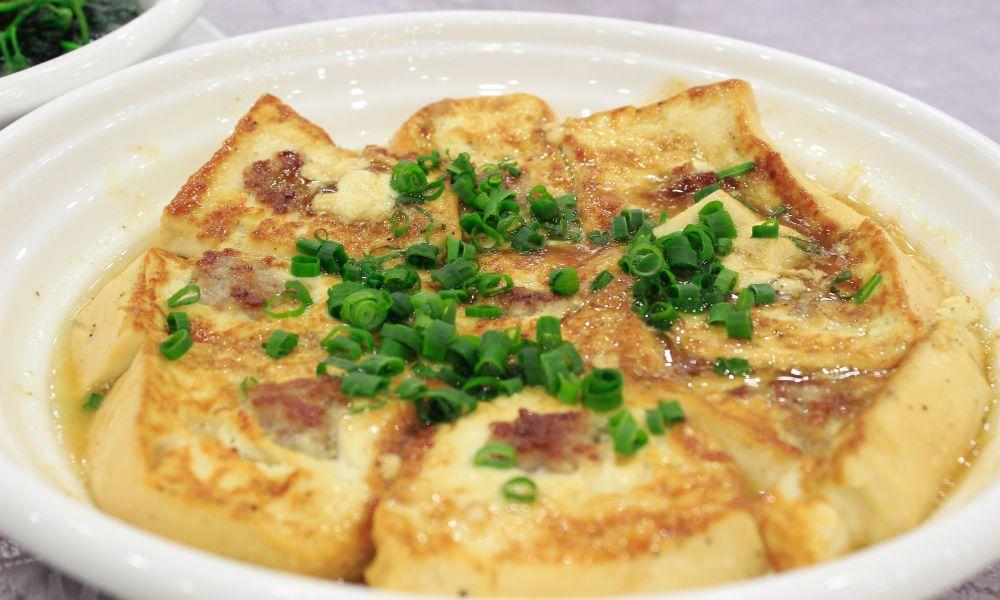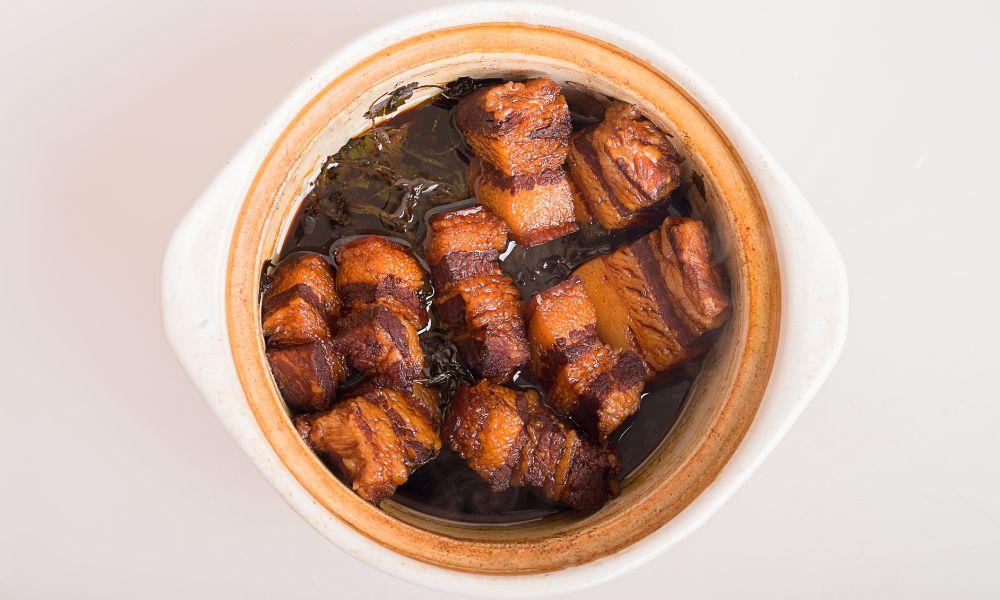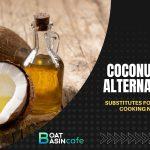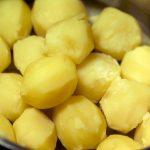Experience the vibrant world of Hakka food as we guide you on a mouth-watering gastronomic adventure through the rich flavors, textures, and culinary techniques that define this revered cuisine. Gain insight into the history of Hakka cuisine and uncover the unique aspects that set it apart from other Chinese culinary traditions.

The History and Heritage of Hakka Cuisine
To truly understand and appreciate the intricacies of Hakka cuisine, it’s essential to learn about the origins and migration history of the Hakka people. The unique Hakkas are originally from the Central Plains of China, but due to several historical events and political turmoil, they were forced to relocate and integrate into other regions – bringing their rich culinary traditions with them.
Keeping these core Hakka culinary traditions at heart, the Hakka people adapted their cooking to incorporate new ingredients and techniques, which led to the development of distinct regional variations of Hakka cuisine. Today, Hakka cuisine can be found throughout China, as well as in other countries with significant Hakka populations, such as Taiwan, Malaysia, and Singapore.
Signature Hakka Dishes
No gastronomic adventure through Hakka cuisine would be complete without a look at the iconic and beloved dishes that define this culinary style. I was excited to delve into the world of Hakka food, starting with a few recommendations from local Hakka friends:
Yong Tau Foo

A quintessential Hakka dish, Yong Tau Foo is a blend of tofu, fish paste, and various vegetables such as eggplant, okra, and bitter gourd. The tofu and vegetables are typically stuffed with a smooth fish paste, and then either boiled, steamed, or deep-fried before being served in a light, flavorful broth.
Hakka Salt Baked Chicken

One of the first Hakka dishes I tried, Hakka Salt Baked Chicken quickly became a personal favorite. This traditional dish involves marinating chicken with a blend of seasonings including Chinese five-spice, garlic, and ginger, then encasing it in coarse salt before baking. The result is an incredibly tender and fragrant chicken dish with a subtle, salty flavor that imparts a delightful umami taste.
Stuffed Tofu

Stuffed Tofu is another popular Hakka dish, made by carefully hollowing out tofu cubes and filling them with a mixture of minced shrimp, mushrooms, and various seasonings. The filled tofu is then coated in a light batter and deep-fried until golden and crispy. Served with a savory dipping sauce, this dish is a perfect example of the Hakka people’s love for texture and flavor combinations.
Hakka Braised Pork Belly

A dish that truly showcases the decadent flavors of Hakka cooking, Hakka Braised Pork Belly is an indulgent treat. Pork belly is marinated, pan-fried, and then slowly braised with a mixture of soy sauce, sugar, and spices until the flavors meld together and the meat is tender and succulent. Often served with a side of leafy greens, this dish is a must-try for any carnivore.
Lei Cha

Surprisingly, Hakka cuisine also offers many vegetarian options, like Lei Cha. This dish consists of a bowl of rice topped with various vegetables, tofu, peanuts, and sometimes dried shrimp. The unique aspect of Lei Cha is the accompanying green tea soup, which is mixed with various herbs and seeds. To enjoy this dish, pour the soup over the rice and mix it all together – an explosion of flavors!
Hakka Culinary Techniques
One aspect of Hakka cuisine that left a lasting impression on me was the traditional cooking techniques employed in their dishes. From the expert use of stir-frying and braising to creative use of steaming methods, the Hakka people have developed a knack for transforming simple ingredients into flavorful masterpieces.
The most crucial aspect of Hakka cooking seems to be finding the perfect balance between flavors and textures, with a particular fondness for the harmony of salty, sweet, and umami tastes. In addition, Hakka cuisine often uses specific ingredients and seasonings, such as preserved vegetables, dried shrimp, and various fermented soy products, to impart depth and complexity to their dishes.
Regional Variations in Hakka Food
As I explored the world of Hakka cuisine, I quickly discovered that there are various regional styles and variations within this culinary tradition. From the salty and spicy flavors of Taiwanese Hakka dishes to the subtle nuances of Malaysian Hakka cuisine, the uniqueness of Hakka food lies in its ability to adapt and transform while remaining rooted in traditional techniques and flavors.
For example, Hakka fusion cuisine has emerged in recent years, blending traditional Hakka flavors with modern techniques and ingredients to create new and exciting dishes for adventurous palates. This innovative approach to Hakka cooking is well worth exploring for those looking for a fresh take on classic dishes.
Hakka Food and Cultural Significance
As I dove deeper into the world of Hakka cuisine, I began to understand that food not only represents sustenance but also serves as a crucial pillar within Hakka culture. From festivals and celebrations to family gatherings, Hakka food is an integral aspect of Hakka life.
Culinary symbolism and traditions are deeply embedded in Hakka culture, with certain dishes representing luck, prosperity, or fertility. The importance of food in Hakka social gatherings is also evident in their communal and welcoming dining customs.
FAQs
What is Hakka cuisine known for?
Hakka cuisine is known for its bold flavors, unique textures, and creative cooking techniques. Its dishes often showcase a perfect harmony of salty, sweet, and umami flavors, with an emphasis on simple, fresh ingredients.
Are there vegetarian options available in Hakka food?
Absolutely! Hakka cuisine offers a variety of vegetarian options, such as Lei Cha, stuffed tofu, and vegetable-centric stir-fries.
What are the key ingredients used in Hakka cooking?
Hakka cuisine often uses preserved vegetables, dried shrimp, tofu, and a variety of fermented soy products to add depth and complexity to their dishes.
How does Hakka cuisine differ from other Chinese regional cuisines?
Hakka cuisine is distinct in its focus on bold, deeply flavored dishes and a unique harmony of tastes. Hakka food is also well known for its use of preserved and fermented ingredients that lend a rich umami flavor to their dishes. These elements set Hakka cuisine apart from other Chinese regional cuisines, which each exhibit their own characteristic flavors and techniques.
Where can I find authentic Hakka restaurants?
Authentic Hakka restaurants can be found throughout China and in countries such as Taiwan, Malaysia, and Singapore, which have significant Hakka populations. You can also find Hakka eateries in some Western countries, particularly where there are substantial Chinese immigrant communities.
Can I learn to cook Hakka dishes at home?
Yes, you can learn to cook Hakka dishes at home by searching for traditional Hakka recipes or enrolling in a local Hakka cooking class. By practicing the techniques and experimenting with flavors, you can master the art of Hakka cooking in your own kitchen.
What are some popular Hakka dessert options?
Hakka dessert options include sweet rice dumplings, red bean soup, and peanut-filled glutinous rice balls, to name a few.
Are there any specific etiquette or customs associated with Hakka dining?
Hakka dining customs emphasize communal eating and sharing of dishes. Generosity and hospitality are hallmarks of Hakka culture, and these values often translate to embracing newcomers and fostering a welcoming atmosphere during meals.
What are the health benefits of Hakka ingredients and cooking methods?
The use of fresh, locally sourced ingredients and a focus on balanced flavors contribute to the health benefits of Hakka cuisine. Fermented and preserved ingredients, such as soybean products and pickled vegetables, have been linked to various health benefits, including improved digestion and a stronger immune system.
How can I incorporate Hakka flavors into my own cooking?
To incorporate Hakka flavors into your cooking, start by experimenting with key Hakka ingredients such as fermented soy products, preserved vegetables, and dried shrimp. Try mastering traditional Hakka cooking techniques like stir-frying, braising, and steaming to achieve the perfect balance of flavors. A great way to start is by trying out easy Hakka recipes and working your way up to more complex dishes.
Conclusion
Through my culinary journey exploring the rich and diverse world of Hakka cuisine, I have discovered a vibrant gastronomic culture that showcases the perfect harmony of flavors, textures, and techniques. From the colorful tapestry of their signature dishes to the underlying importance of food in their cultural traditions, Hakka cuisine is truly a treasure trove of culinary delights that every gastronome should experience.
If you haven’t already, I highly encourage you to embark on your own adventure and explore the amazing flavors and traditions of Hakka cuisine. Savor the unique cultural heritage and treat your senses to a gastronomic experience unlike any other.








